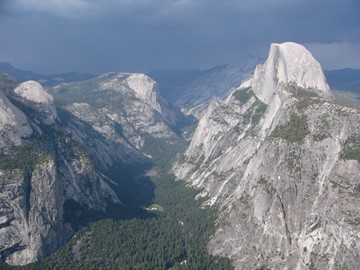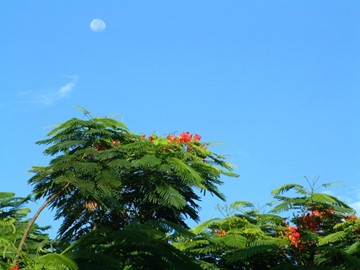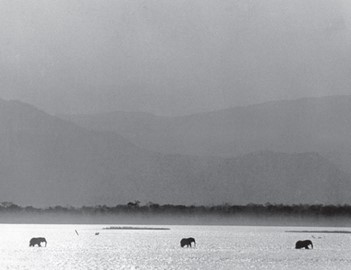category :: natural
Olympic
Olympic National Park, a UNESCO World Heritage site in the United States, is renowned for its diverse ecosystems, encompassing rugged coastlines, temperate rainforests, and glaciated mountains. The park is home to unique flora and fauna, including the iconic Roosevelt elk and ancient Sitka spruce trees. Visitors can explore its pristine wilderness through hiking trails, scenic drives, and coastal beaches, offering a glimpse into one of North America's most ecologically rich landscapes.
Great Smoky Mountains
Great Smoky Mountains, a UNESCO World Heritage Site in the USA, is renowned for its rich biodiversity and stunning natural landscapes. This national park features ancient mountains, dense forests, and a variety of plant and animal species, many of which are unique to the region. Its cultural significance is tied to the history of the Cherokee people and early European settlers, preserved through historic structures and traditions. The site attracts millions of visitors annually for its scenic beauty and eco... Read More
Yosemite
Yosemite National Park, a UNESCO World Heritage site in the United States, is renowned for its stunning granite cliffs, cascading waterfalls, and diverse ecosystems. This iconic park features breathtaking landmarks like El Capitan and Half Dome, attracting millions of visitors annually for hiking, climbing, and nature exploration. Its rich biodiversity includes giant sequoia groves and abundant wildlife, making it a globally celebrated natural treasure.
Hawaii Volcanoes
Hawaii Volcanoes National Park, a UNESCO World Heritage site in the United States, showcases one of the planet's most active volcanic landscapes, featuring two renowned volcanoes, Kilauea and Mauna Loa. Established in 1916, this national park protects diverse ecosystems, from lush rainforests to stark lava fields, while preserving significant Hawaiian cultural sites and traditions tied to the volcanic terrain. Visitors can explore dramatic craters, steaming vents, and rare geological formations, making it a... Read More
Carlsbad Caverns
Carlsbad Caverns National Park, a UNESCO World Heritage Site in the USA, is renowned for its vast underground limestone chambers, formed millions of years ago by acidic water eroding the rock. The park features over 100 caves, with the most famous being the Carlsbad Cavern, home to stunning stalactites, stalagmites, and other geological formations illuminated for visitors. It also hosts a massive colony of Brazilian free-tailed bats, whose nightly exodus during warmer months draws spectators. This natural w... Read More
Canaima
Canaima National Park, a UNESCO World Heritage site in Venezuela, is renowned for its stunning natural beauty, featuring dramatic tepuis (table-top mountains), lush rainforests, and cascading waterfalls, including the world-famous Angel Falls, the highest uninterrupted waterfall on Earth. The park is a biodiversity hotspot, home to unique flora and fauna, such as the carnivorous pitcher plants and the elusive jaguar. It also holds cultural significance, with indigenous Pemon communities living harmoniously ... Read More
Ha Long Bay
Ha Long Bay, a UNESCO World Heritage site in Vietnam, is renowned for its stunning natural beauty, featuring thousands of limestone karsts and emerald waters. This iconic seascape, dotted with dramatic islands, caves, and floating villages, showcases a unique blend of geological wonders and cultural heritage. Its biodiversity and striking landscapes make it a globally celebrated destination for travelers and nature enthusiasts.
Phong Nha Ke Bang
Phong Nha-Ke Bang, a UNESCO World Heritage site in Vietnam, is renowned for its extensive limestone karsts, vast cave systems, and rich biodiversity. It features some of the world’s largest and most spectacular caves, including Son Doong, alongside underground rivers and unique geological formations. The site also harbors diverse ecosystems with rare flora and fauna, making it a significant natural treasure and a global conservation priority.
Socotra Archipelago
The Socotra Archipelago, a UNESCO World Heritage site in Yemen, is renowned for its extraordinary biodiversity and unique ecosystem. Often called the 'Galápagos of the Indian Ocean,' it hosts a variety of endemic species, including the iconic dragon’s blood tree with its striking umbrella shape. Its isolation has preserved a rich natural heritage, making it a globally significant ecological treasure.
Mana Pools
Mana Pools, a UNESCO World Heritage site in Zimbabwe, is renowned for its pristine wilderness and exceptional biodiversity along the Zambezi River. This national park features seasonal floodplains, riverine forests, and iconic baobab trees, supporting a rich ecosystem of wildlife, including elephants, lions, hippos, and rare bird species. Its unique landscape, formed by the river’s meandering channels, offers stunning natural beauty and opportunities for canoe safaris and walking tours. Recognized for its e... Read More
Arabian Oryx Sanctuary
The Arabian Oryx Sanctuary, a UNESCO World Heritage site in Oman, is a protected reserve renowned for its successful conservation of the Arabian oryx, a species once extinct in the wild. Established to safeguard this iconic antelope, the sanctuary showcases a unique desert ecosystem with diverse flora and fauna, including rare migratory birds and endemic plants. Its recognition by UNESCO highlights its global significance as a model for wildlife preservation and sustainable environmental management. Visitor... Read More










